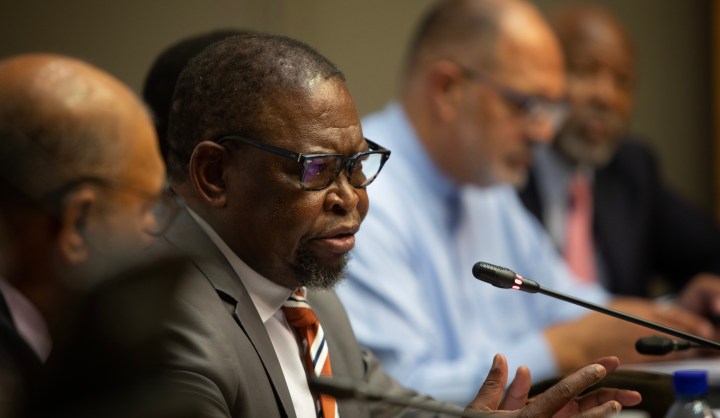MTBPS
Mini budget – The government plans to take over a portion of Eskom’s debt to ease the burden

Eskom’s debt stood at R356.8-billion in 2021, according to the power utility’s last published annual financial statements. The government plans to take over a portion of Eskom’s debt and transfer it to its financial books. But this plan still has many holes in it.
After three years of promises and delays, the government has unveiled a broad plan to tackle Eskom’s smothering debt of nearly R400-billion.
But the plan still lacks many and specific details, which the government said will be unveiled in February 2023 during the main budget.
More broadly, the government plans to take over a portion of Eskom’s debt, National Treasury unveiled in the Medium-Term Budget Policy Statement on Wednesday. In practical ways, a portion of Eskom’s debt will be moved from the power utility’s financial books or balance sheet to that of the government.
A solution to Eskom’s debt problem was first promised in late 2019 by former finance minister Tito Mboweni. But for many years a credible debt solution was never announced while Eskom’s financial and operational problems worsened.
Eskom’s debt stood at R356.8-billion in 2021, according to its last published annual financial statements.
Taking over a portion of Eskom’s debt will give the utility the space and opportunity for it to be financially sustainable, Treasury has argued. Eskom doesn’t generate enough revenue from electricity sales to cover its debt and interest payments.
Its large debt load also makes it difficult for the utility to raise money from investors to fund its operations, including paying for the maintenance of its old and creaking power stations. Investors in debt capital markets are also wary of lending Eskom money because its debt problems make the utility likely to default on repayments, heightening its risk profile.
But with a portion of its debt transferred to the government’s financial books, Eskom’s risk profile might improve. “[It] will allow Eskom to implement planned capital investment and critical maintenance and ensure that the company no longer relies on government bailouts,” Treasury said.
The debt transfer will allow Eskom to raise money in capital markets to fund the shutdown of coal-fired power stations that have reached their end-of-life cycle and explore refurbishing them into renewable energy projects.
More questions than answers
But the debt transfer plan still has many holes in it and there are still many outstanding answers, especially on the mechanics of transferring Eskom’s debt.
First, Treasury didn’t put an amount to the debt it plans to take over. Treasury and Finance Minister Enoch Godongwna said only that “between one-third and two-thirds” of Eskom’s current debt would be taken over. Eskom CEO André de Ruyter has previously said that R200-billion of the utility’s debt has to be moved away from its balance sheet to make it financially sustainable.
Second, for the government to take over a portion of Eskom’s debt, it has to get consent and approval from commercial banks and investors that have lent money to the power utility. There is no indication that Treasury has received approval from commercial banks and other investors.
Third, it is not clear what impact transferring Eskom’s debt will have on public finances and the country’s debt situation, which stands at R4-trillion. It is expected that taking over a portion of the utility’s debt will increase the country’s debt. Treasury expects the country’s gross loan debt to reach 71.4% of GDP in 2022/23, but drop in the next seven years.
The government is already exposed to Eskom debt through the government guarantees it provides to the power utility. Eskom uses these guarantees to raise money in debt capital markets and if it defaults on debt repayments, the government will be on the hook for these. About 70% of Eskom’s debt is guaranteed by the government. Treasury is expected to take over the guaranteed and non-guaranteed portion of Eskom’s debt.
Treasury said it is leading a process to finalise details of the debt transfer plan and other relief measures for Eskom. “The specifics of the programme, including the selection of the relevant debt instruments and the method of effecting the relief, are still being finalised,” it said. The finalised details will determine the quantum of the debt that will be taken over and the impact this exercise will have on the country’s debt profile. DM/BM


















Comments - Please login in order to comment.